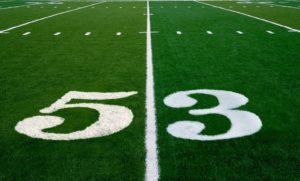What the “Super Bowl Indicator” Means for Your Retirement

There are many times I wish I could have seen the future.
For instance, I would’ve liked to have known how my Tennessee Titans’ season would end…
(I’ve been a Titans season ticket holder since day one of the franchise in Nashville. Many of you who are sports fans know they lost recently to the Kansas City Chiefs in the AFC championship.)
If the Titans had gone to the Super Bowl and I’d won the season ticket holder lottery, I could’ve bought two tickets to the Super Bowl at $900 face value apiece. I already had a friend lined up to go… but now the market value for the cheapest ticket is $4,500!
Investors who have to watch their less profitable investments play out feel a similar kind of disappointment. So sometimes, they do try to predict the future.
I have mentioned before that an inverted yield curve has predicted a recession within 18 to 24 months 85% of the time. This is one of many indicators that professionals use to get a sense of which direction the market is headed.
Why has that been the case?
An inverted yield curve means that bond investors are shifting to buy longer-term bonds because they think that rates will come down.
This implies that those investors feel growth in the economy slowing. If the curve inverts, that generally means they feel that growth will slow enough for the economy to fall into recession.
There are other, more wacky market predictors that are less accurate, however… and one even ropes in my Tennessee Titans.
The theory is that if a team from the AFC (like Kansas City) wins the Super Bowl, the stock market will be down for the year. If an NFC team (like San Francisco) – or an AFC team that had been in the old NFL – wins, the stock market will be up.
Another famous market predictor you may have heard of is the “Santa Claus rally.” This is the theory that equity markets will be up from Christmas Day to New Year’s Day, and about 75% of the time since 1990, that has happened.
This is more than just coincidence, however. Many theories attempt to explain it.
Case in point – many investors do tax-loss selling in the fall before the end of the year. This is generally after they’ve waited more than 30 days to follow the provisions of the “wash-sale rule.”
In this theory, the Santa Claus rally represents just these investors’ desire to put those funds back to work.
That account makes the most sense to me, but others say the indicator exists because of a holiday mood on Wall Street and higher spending due to expected bonuses early the next year.
Other theories say that is it because trading is light, and still others suspect it is because investors want to get in front of the “January effect”…
The January effect is the belief that the stock market will be up in January more often than not. The tax-loss selling idea described above is considered one of the main reasons for it.
The Financial Analysts Journal has even attributed the behavior to the fact that investors believe the equity markets will be up in January because that is usually the case.
So the January effect might really be a placebo effect…
In fact, since 1979, the S&P 500 and Dow Jones Industrial Average have been up only 63% of the time.
In the end, the January effect is not as accurate a predictor as the inverted yield curve – or even the Super Bowl.
We all have different ways of trying to predict the future. It’s a bad habit, but it’s also human nature.
So when it comes to investing, protect yourself by making sure your indicators are based on strong foundations. Trust the data (and the experts) – and enjoy this weekend’s game. But don’t allow one unreliable market “indicator” to cause you to fumble your entire retirement.
Good investing,
Rob







